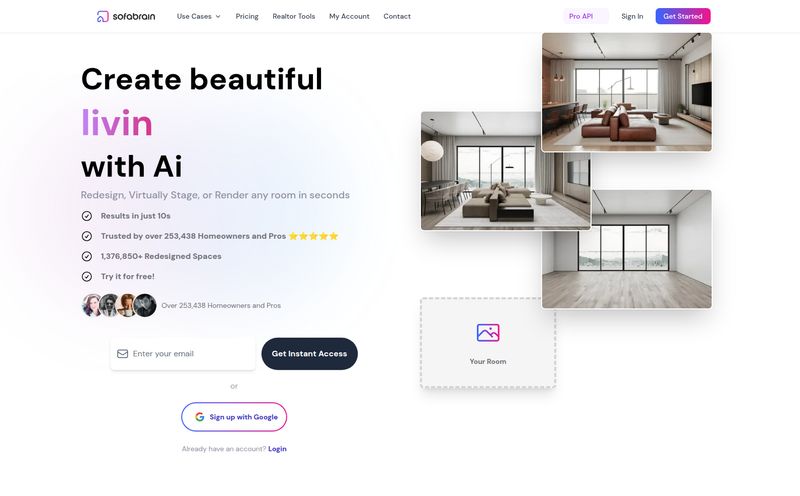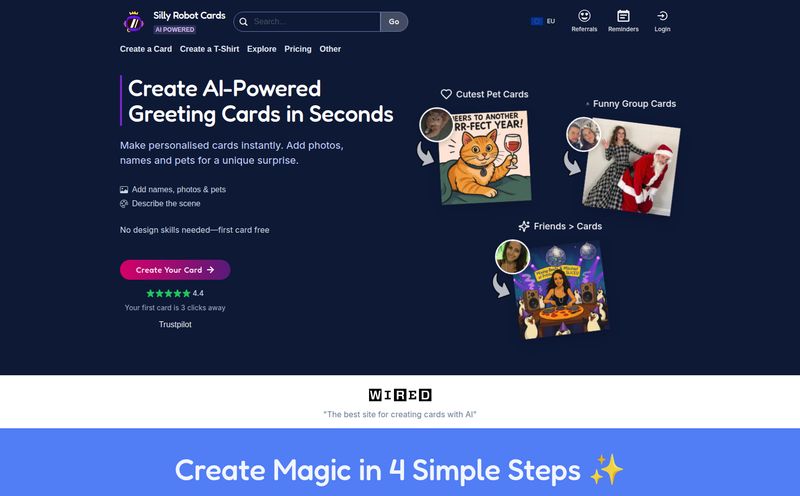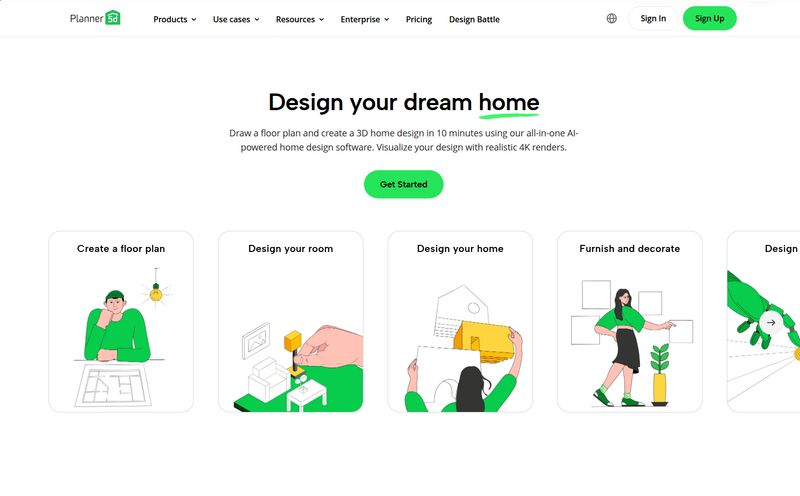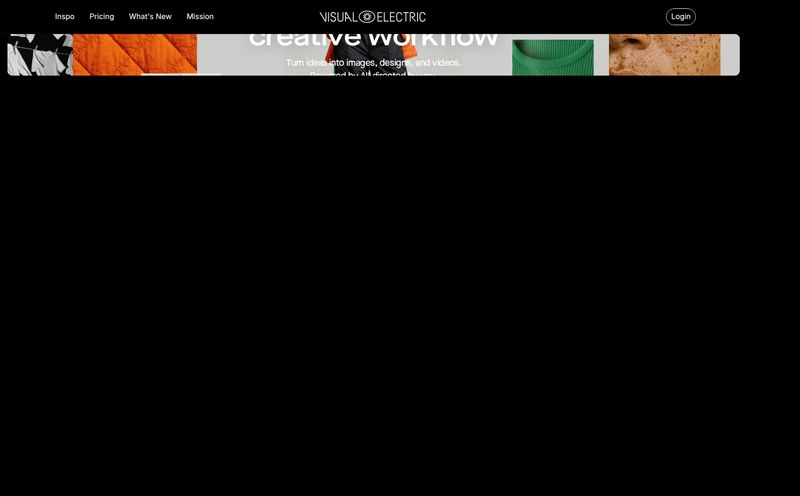There are few phrases in the corporate world that inspire a collective groan quite like, “I need a quick presentation on this by tomorrow.” We’ve all been there. That sudden sinking feeling, the knowledge that your evening now belongs to PowerPoint, wrestling with text boxes that refuse to align and searching for a non-cheesy stock photo.
For years, I've seen brilliant marketing strategies and data-driven insights fall flat because they were presented in a deck that looked like it was made in 1998. As someone who lives and breathes traffic, trends, and conversions, I know that how you present your data is just as important as the data itself. A bad presentation isn’t just ugly; it’s bad for business.
So, when I stumbled upon a platform called Choladeck, my curiosity was piqued. It claims to help you build presentations 4x faster using its library of premade slides. A bold claim. Is it just another template site, or is it something more? I decided to take a look.
So, What Exactly Is Choladeck (and Twodart)?
Think of Choladeck as your secret weapon against mediocre presentations. It’s not an entirely new software you have to learn from scratch. Instead, it’s a massive, professionally-curated library of slides, icons, charts, and images that plugs right into the tools you already use: PowerPoint, Keynote, and Google Slides. The core engine or feature set behind this is called Twodart, which is what you'll see mentioned throughout their platform.
Instead of starting with a terrifyingly blank slide, you start by browsing a collection of over 9,800 unique, fully animated slides. It's like having a professional designer on standby, ready to hand you the exact slide you need, whether it's a timeline, a SWOT analysis, a team introduction, or a complex data chart.
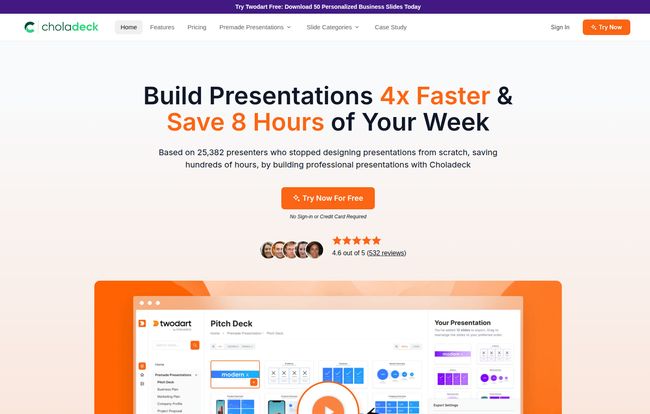
Visit Choladeck
You just pick what you need, pop in your own text and data, and you’re basically done. The idea is to take the design work out of the equation so you can focus on the content. I’ve always felt the best tools are the ones that get out of your way, and this seems to be Choladeck's entire philosophy.
The Hidden Cost of Clunky Presentations
Before we get into the nitty-gritty of the features, let's talk about why a tool like this even matters. The folks at Choladeck put it nicely on their site, contrasting the benefits of their tool with the “cost of bad presentation,” and it really hit home for me.
The Time Sink and Lost Opportunities
Think about the billable hours. How many hours have your team (or you) sunk into formatting slides? Adjusting font sizes, hunting for icons, making sure the company logo is in the right corner. A study I once read from the Harvard Business Review network emphasized that simplicity and clarity are what win audiences, but achieving that simplicity can be ironically time-consuming. Choladeck's main pitch is giving you that time back. Those hours can be spent on strategy, outreach, or, you know, actually generating traffic and leads.
And the lost opportunities? A poorly designed pitch deck can make a million-dollar idea look cheap. It can create a sense of distrust and a lack of professionalism before you even say a word. In the world of CPC and SEO, first impressions are everything, and a slide deck is often the very first impression a potential client gets.
How Choladeck Aims to Solve the Presentation Nightmare
So, does it actually work? Based on my poking around, it solves a few key problems incredibly well.
A Slide Library That Is Actually Useful
We’ve all seen those free template sites with a handful of generic, overused designs. This is not that. With over 9,870+ unique slides across 159 categories, the sheer volume is impressive. You need a slide for a project timeline? They have dozens. A funnel diagram? Pick your favorite. They even have industry-specific stuff for marketing, finance, and real estate. It's less of a template and more of a comprehensive toolkit.
Branding on Autopilot, Finally
One of the biggest pains of using templates is adapting them to your own brand. You have to manually change every single slide's color scheme and fonts. Choladeck has a brand integration feature. You set up your brand's color palette, logos, and fonts once, and it can apply them across the slides you choose. This is huge for maintaining brand consistency, especially for marketing and sales teams who need to whip up on-brand materials quickly. No more slightly-off-brand shades of blue!
It Just Works With Your Favorite Apps
This might be my favorite part. Choladeck doesn’t try to lock you into a proprietary new presentation software. It’s a resource library that works directly with PowerPoint, Keynote, and Google Slides. This means there’s virtually no learning curve for your team. You’re still working in a familiar environment, just with a much, much better set of tools. Plus, their charts are compatible with Excel, so you can just copy and paste your data without breaking everything. Its a simple, but brilliant, decision.
Let's Talk Turkey: The Choladeck Pricing Plans
Alright, the all-important question: what does it cost? The pricing structure is pretty straightforward, which I appreciate. No confusing credit systems or weird enterprise-only models.
Here’s a quick breakdown:
- Free Plan ($0): This is your test drive. You get access to 50 free slides, 50 icons, and 100 stock images. It's more than enough to get a feel for the platform and see if the quality is up to snuff. No credit card required, which is always a good sign.
- Personal Plan ($29/month or $20/month billed annually): This is where it gets interesting. You get access to the entire library of 9870+ slides, over 1000 icons, and a million stock images. The monthly plan limits you to 100 slide exports per month, which is decent. But the yearly plan is the real deal—it gives you unlimited slide exports for a lower monthly cost. If you make presentations regularly, the annual plan is a no-brainer.
- Teams Plan ($69/month or $58/month billed annually): This includes everything in the Personal plan but adds features for collaboration. You get a shared workspace, shared branding, premium support, and an increased export limit of 300 slides per month for the whole team. Perfect for marketing agencies or corporate departments.
Honestly, the value in the Personal Yearly plan seems almost too good to be true for a solo consultant or small business owner. The amount of time saved would pay for the subscription in the first month, easily.
Who Is This For? And More Importantly, Who Is It NOT For?
Choladeck is a lifesaver for a specific type of professional. If you're a marketer, a sales rep, a startup founder, a consultant, or an educator—basically, anyone who needs to create professional-looking presentations frequently and quickly—this tool is for you. It’s for the person who values efficiency and results over the process itself.
Now, who isn't it for? If you're a graphic designer who truly loves the craft of building every slide from a blank canvas, manually kerning your type and creating bespoke vector assets, this might feel like cheating. It’s a tool for communication, not for pure artistic expression. Also, a minor point, but it requires an internet connection to browse and download the slides. Not a big deal for most of us, but something to keep in mind if you often work on the go without access.
My Final Take on Choladeck
After digging through Choladeck, I'm genuinely impressed. It’s not just a template library; it’s a well-thought-out system designed to solve a real, persistent problem. It’s a productivity tool masquerading as a design tool. It takes the most tedious part of making a presentation and automates it, freeing you up to actually think about what you're going to say.
Will it magically make you a better public speaker? No. But it will give you a powerful, professional, and consistent visual foundation to build upon, and it will save you a ridiculous amount of time. And in the business of SEO and marketing, time is the one resource we can never get back.
Frequently Asked Questions About Choladeck
1. What is Twodart in Choladeck?
Twodart appears to be the name of the core technology or feature set within the Choladeck platform. It refers to the system that provides the vast library of premade slides, icons, and customization features, allowing users to build presentations quickly within PowerPoint, Keynote, or Google Slides.
2. Can I use Choladeck if I have no design experience?
Absolutely. In fact, that's the ideal use case. The platform is designed for people who aren't professional designers. All the slides are pre-designed for you. Your job is simply to choose the ones that fit your message and add your own content.
3. Is Choladeck compatible with my computer?
Yes. Choladeck works with the most popular presentation software on both Mac and Windows. It's fully compatible with Microsoft PowerPoint, Apple Keynote, and Google Slides.
4. Are there any export or usage limitations?
Yes, depending on your plan. The Free plan has limited assets. The monthly Personal and Teams plans have monthly export limits (100 and 300, respectively). However, the Personal Yearly plan offers unlimited slide exports, providing the best value for heavy users.
5. Can I use Choladeck offline?
No, you need an internet connection to access the Choladeck library, browse slides, and download them into your presentation software. Once a slide is downloaded, you can edit it offline within PowerPoint or Keynote like any other slide.
Reference and Sources
- Choladeck Official Website
- Choladeck Official Pricing Page
- Gallo, C. (2013). How to Give a Killer Presentation. Harvard Business Review. Retrieved from https://hbr.org/2013/06/how-to-give-a-killer-presentation
